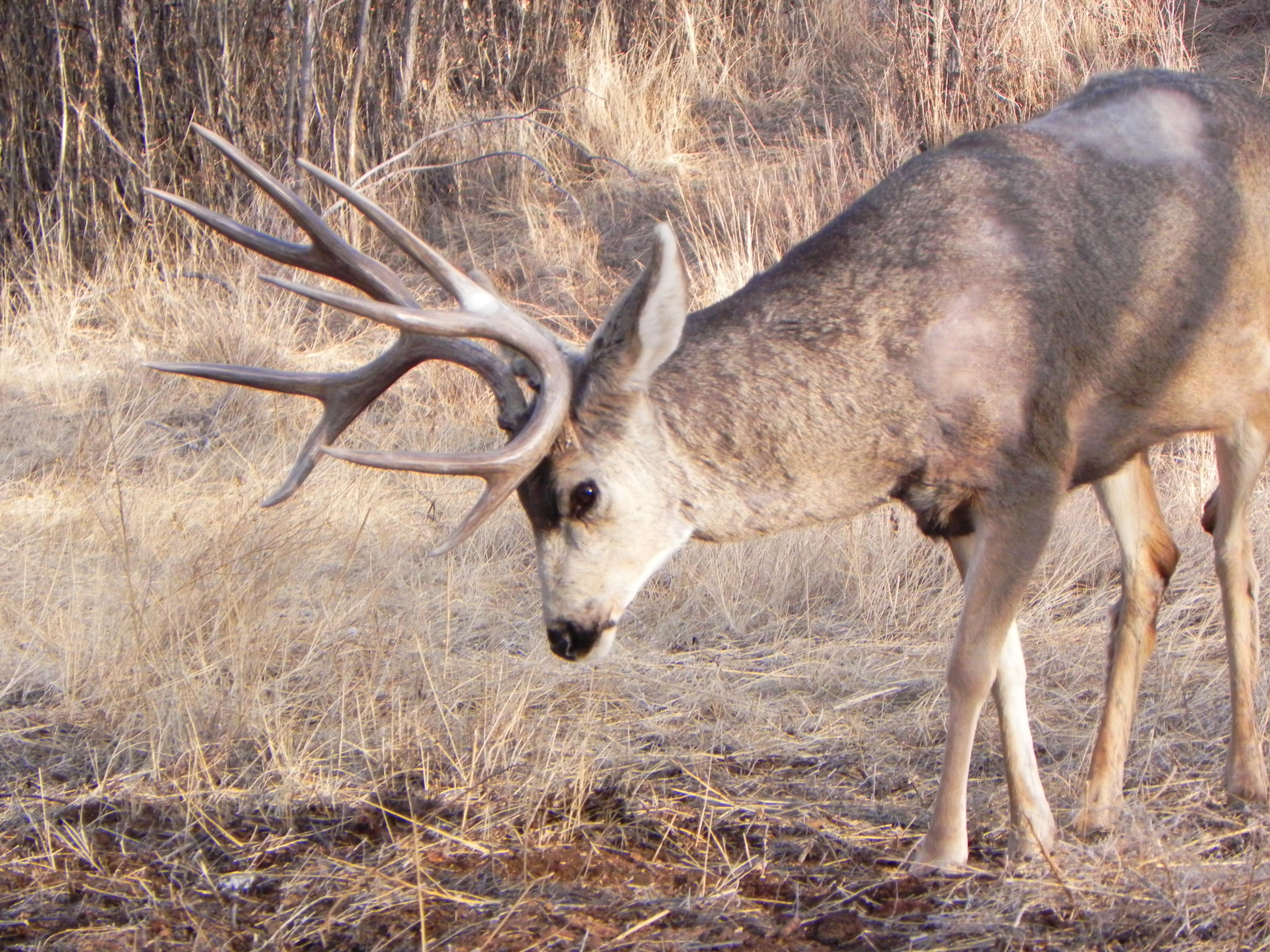

Rutting season is the time of year when Colorado Mule deer mate. That means it’s also the time when a rush of testosterone causes bucks to become extremely aggressive.
Castle Rock resident Katie Van Horn learned through experience how terrifying a buck attack can be. The morning started as it always did: she let her Boxers out into the yard to go to the bathroom. At 5 a.m. her yard is still very dark and Van Horn admits she didn’t think to look for deer. When she heard her 3-year-old Boxer Huck barking and went to investigate she was horrified.
“He had two puncture wounds in his head, two more by his groin and his gut was spliced wide open with the intestines coming out,” Van Horn said. “I thought originally that maybe he was attacked by a coyote, but looking at the wounds you could tell they were from a deer.”
Van Horn credits their dog’s life to the quick thinking of her husband who field dressed the dog and rushed him to the vet. Huck had to undergo emergency surgery to resect his bowel, but is expected to make a full recovery.
Van Horn said there were four other dogs at the vet in treatment for wounds inflicted by deer.
Attacks such as these are why Colorado Parks and Wildlife spokeswoman Rebecca Ferrell wants to get the word out about the unusually hostile behavior bucks exhibit when ‘in rut.’ People should be extra vigilant to keep their pets — especially dogs — under control and safe.
While cats are also at risk of attack, Ferrell said that because dogs are curious and much more likely to approach or even chase wildlife, a buck may see the dog as a challenger and an obstacle to mating — a precarious situation.
“Dogs can often be targets and be injured by a buck, because they will start trying to gore them,” Ferrell said. “Cats tend to keep a little bit more to themselves and have a few more escape routes than a dog would, so it's really more targeted for us this time of year to really be thinking about dogs in particular.”
Van Horn hopes that by hearing her story others will be more careful, even in their own backyard. She got back from the vet and checked to see if the deer was still there and “it came at me,” she said. “I saw a doe in the neighboring yard on the corner lot which means that deer had to jump two fences to attack my dog.”
Her real fear is what could have happened if her young son or another child in the neighborhood had encountered the deer. As a Colorado native she understands that deer in urban neighborhoods is increasingly common, but she never knew they could be so violent.
Mating season starts in late summer and lasts through mid-December. Until then, CPW’s Ferrell said the easiest way to avoid conflict is to give deer a wide berth.
“We do like to follow that rule of thumb,” she said. “If you stick your thumb out and close one eye, your thumb should pretty much cover as much of that animal as possible.”
And put the camera down. Your deer selfie may end up with either you or your animal being gored by an agitated buck if you venture too close. Dogs should also be on a leash no shorter than six feet long at all times outside of their yards. Pet owners should also check their yards for deer before letting them out alone. This goes hand in hand with the biggest ‘no-no’ year round Farrell said.
“Never, ever leave food outside that could attract a deer into your yard,” she said.









